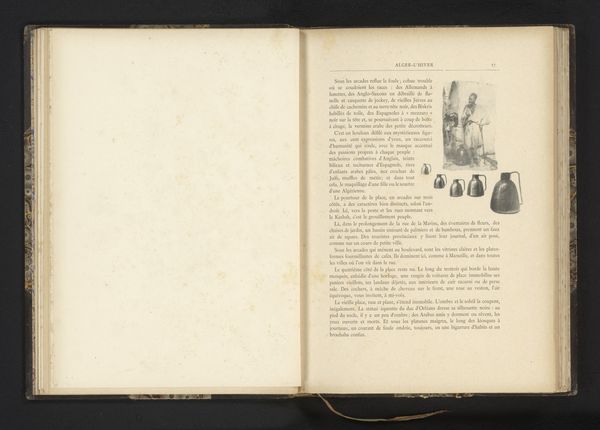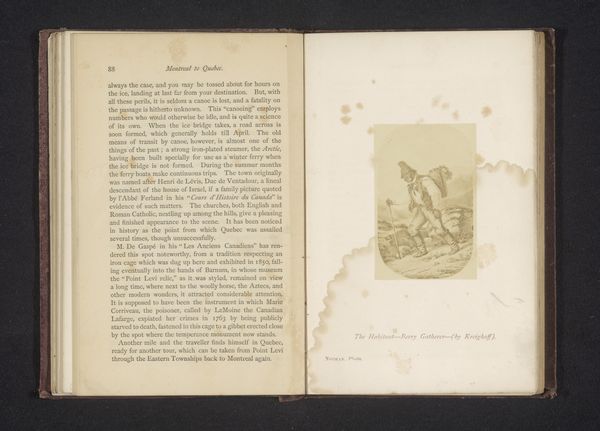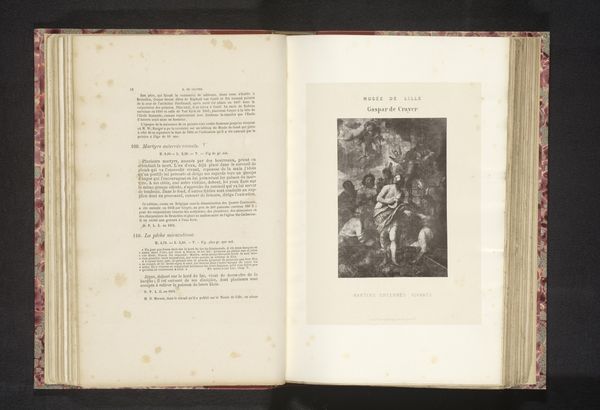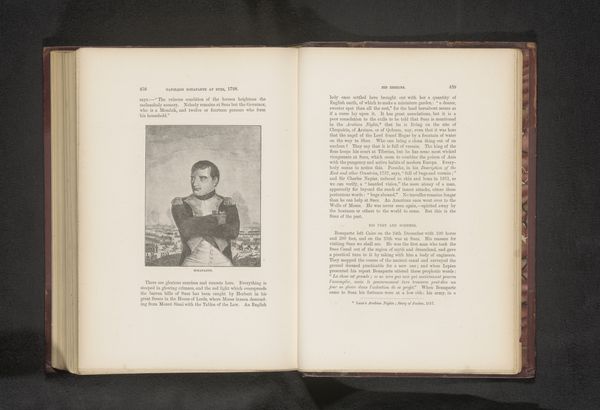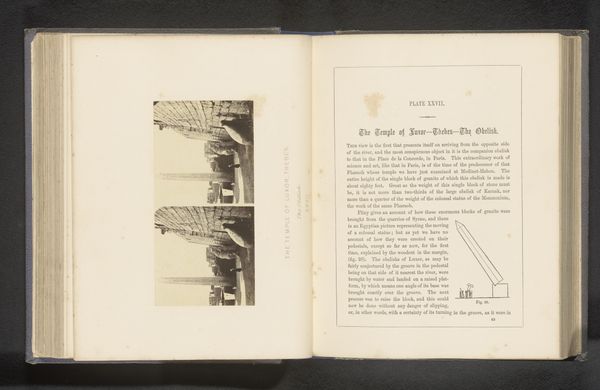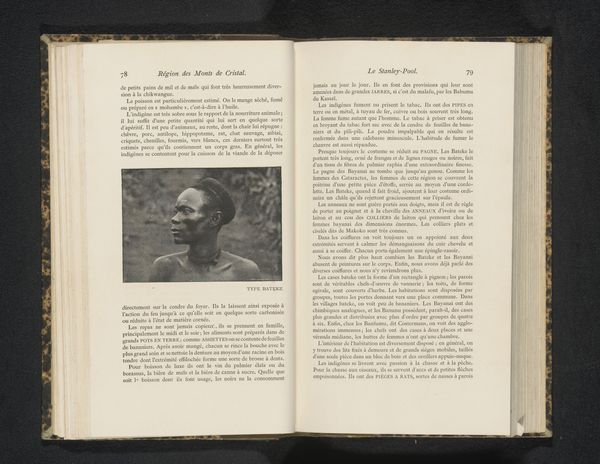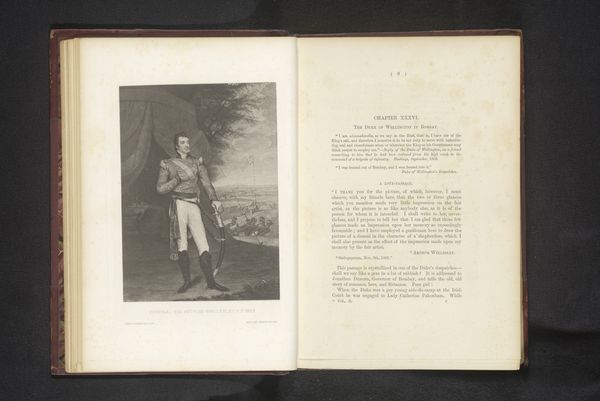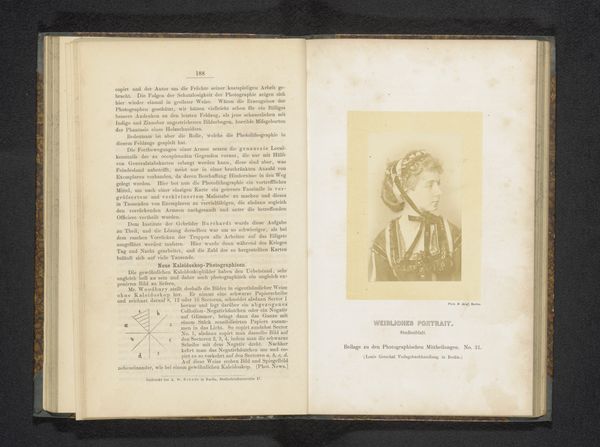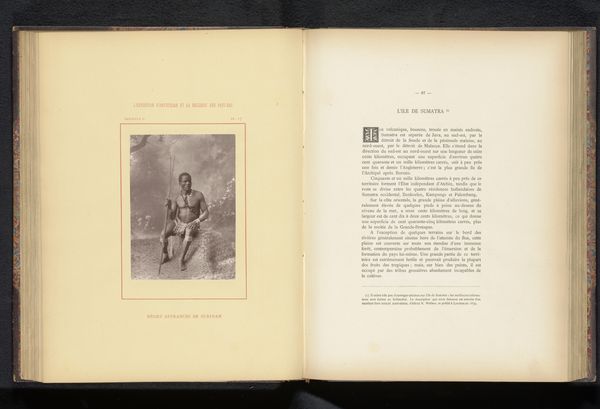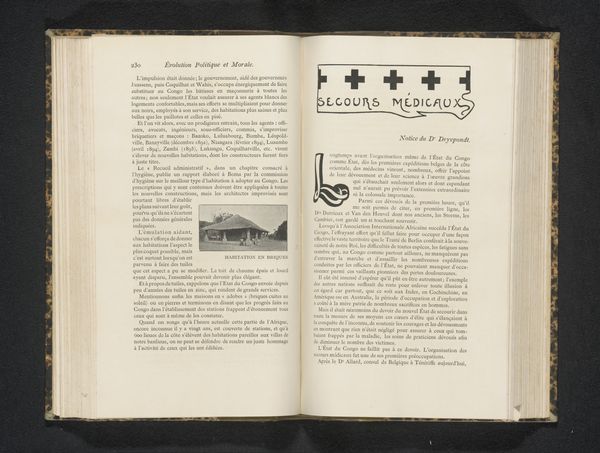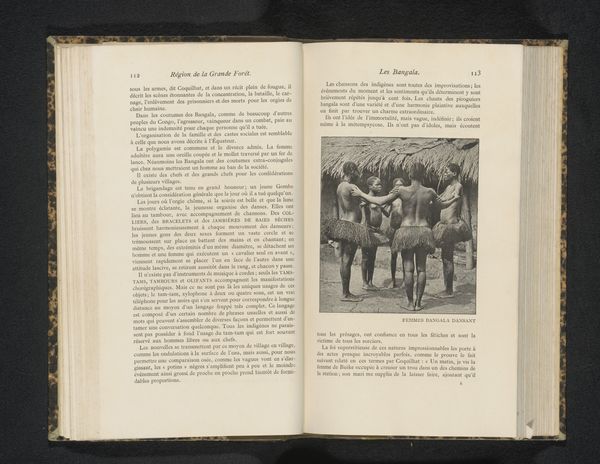
print, paper, photography
#
paper non-digital material
#
narrative-art
# print
#
sketch book
#
paper
#
photography
#
history-painting
Dimensions: height 109 mm, width 47 mm
Copyright: Rijks Museum: Open Domain
Editor: This is a striking image; it's called "Portret van de leider van de Bazoko in Congo," dating back to before 1892. It seems to be a print reproduced in a book. The leader looks powerful, yet there’s also a vulnerability in his eyes. What strikes you when you look at this, knowing its context? Curator: It's impossible to look at a portrait like this without considering the colonial gaze. This image, likely produced during a period of intense European exploration and exploitation in the Congo, reflects a very specific power dynamic. How was this leader represented? What was emphasized, and what was erased, to fit European narratives about Africa and its people? Editor: That’s a really interesting point. So, are you saying the image itself might be a form of colonial propaganda, regardless of the artist's intention? Curator: Exactly. Consider the staging, the lighting, even the very act of taking someone's portrait without their explicit, informed consent. Photography, and printmaking, became tools for constructing and disseminating ideas about race and power. Do you see any clues within the image itself that speak to that power imbalance? Editor: Well, the subject is standing, almost posed, while the photographer remains unseen, in control of the composition. The text is in French, which would place him firmly in the Western narrative...It makes you wonder about his own understanding of the encounter. Curator: Precisely. The very act of framing him within a European context is telling. How might a contemporary Congolese artist or historian reframe this image to reclaim agency and narrative? That's the critical work we need to do – to constantly question the power dynamics embedded within these historical documents. Editor: This really challenges the way I thought about historical portraits. I now realise that so much is lost through translation from one culture to another. Curator: It is crucial to analyze historical imagery for the social inequalities it reflects, to better understand their legacy today.
Comments
No comments
Be the first to comment and join the conversation on the ultimate creative platform.
